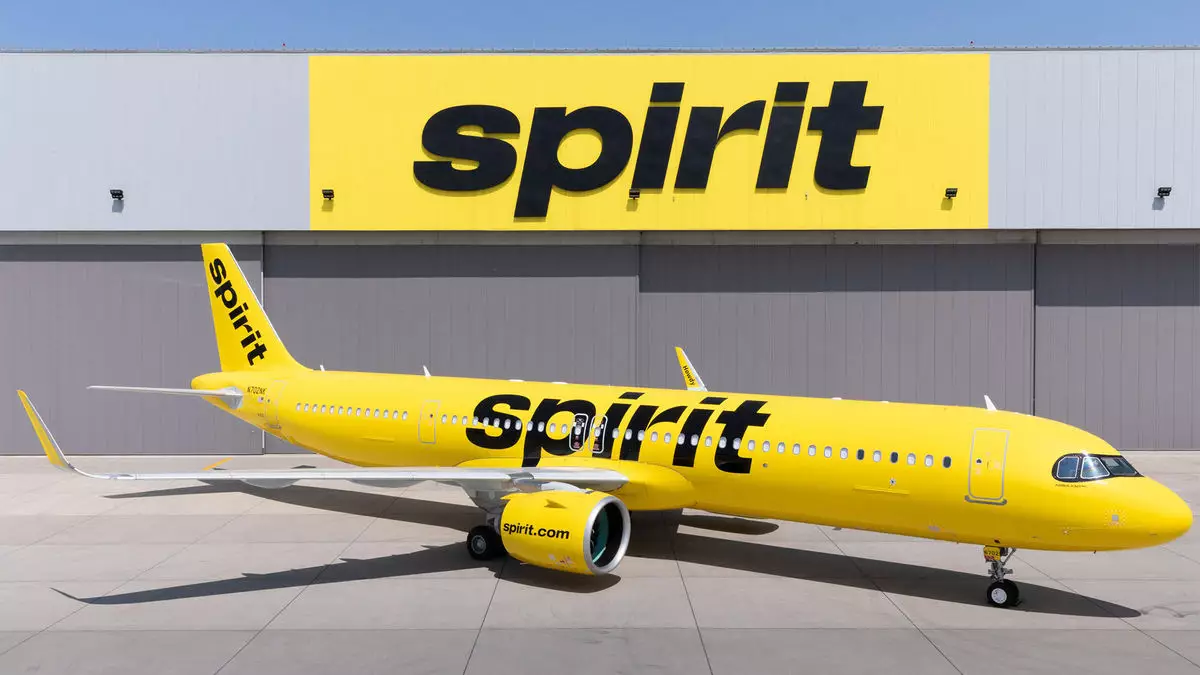In a bold move, Spirit Airlines has initiated a prearranged Chapter 11 bankruptcy process, strategically positioning itself for what it hopes will be long-term viability and future growth. This dramatic decision comes in the wake of overwhelming debt and escalating operational losses that have left analysts skeptical about the airline’s survival trajectory. Despite management’s optimistic veil, industry observers, including Bloomberg Intelligence’s aviation analyst Francois Duflot, warn that Spirit’s flexibility is limited; the airline has mere quarters, not years, to implement a turnaround.
Spirit’s debt restructuring agreement, revealed on November 18, lays the groundwork for transformative change. By converting a significant portion of its current debt—approximately $795 million—into equity owned by its existing bondholders, the airline not only relieves itself from an immediate crisis but also secures a fresh equity injection of $350 million. Additionally, a $300 million loan will bolster its cash reserves. This maneuver reduces Spirit’s immediate debt liabilities from $1.6 billion down to $840 million, which will not mature until 2030 if the court approves the plan. However, this restructuring comes at a critical price: existing shareholder equity will be completely wiped out.
Operational Continuity Amidst Turmoil
Importantly, throughout this turbulent period, Spirit asserts that its operations will continue as usual. Customers can still utilize flight credits and loyalty points, maintaining a semblance of normalcy. Spirit has pledged to complete the bankruptcy process by the first quarter of 2025, professing that it aims to emerge “even better positioned” to deliver affordable travel options.
This bankruptcy marks a historic moment as it is the first by a major U.S. airline since American Airlines filed for similar proceedings in 2011. Once a leader in low-cost air travel, Spirit has faced a rocky road; the pandemic fundamentally altered consumer preferences, shifting demand towards more premium seating options. Since 2020, Spirit’s operating losses have totaled nearly $2 billion, culminating in an alarming negative operating margin of -27% during the third quarter of 2023.
In a prior attempt to secure stability, Spirit had pursued a $3.8 billion merger with JetBlue, aiming to create a formidable force in the aviation space. Nevertheless, intentions were thwarted by regulatory bodies; in January, the Department of Justice successfully blocked the merger under antitrust laws, forcing Spirit into a precarious financial position. Finding itself scrambling for liquidity in the wake of this setback, the company took immediate steps to restructure its operations, including implementing new fare bundles designed to attract higher-spending customers and announcing substantial capacity cuts of 20% for the fourth quarter.
An essential tactic within Spirit’s restructuring plan involves selling off assets, which has already begun with an agreement to divest 23 Airbus aircraft for approximately $519 million. Additionally, management suggests a series of customer service enhancements, such as improved snack options, complimentary WiFi for loyalty members, and a new premium economy class, all aimed at remoldings its previously harsh reputation as a no-frills service provider.
Despite these proposed innovations and operational shifts, significant challenges await Spirit. Scott Keyes, founder of travel subscription service Going, articulates a critical viewpoint, emphasizing that long-standing brand impressions are notoriously difficult to overturn. Spirit Airlines has been the target of countless jokes and ridicule owing to its bare-bones approach. The pandemic has exacerbated this issue as consumer expectations have evolved, making the airline’s task to appeal to a more affluent passenger base particularly daunting.
Keyes forecasts a plausible long-term outcome involving acquisition by rival airlines such as Frontier or JetBlue, perpetuating a cycle of consolidation within the industry. However, liquidation remains a distant yet conceivable prospect, underscoring the tightrope that Spirit traverses in its quest for survival.
As the clock ticks and debts remain, existing liquidity levels come into sharper focus. Spirit anticipates ending 2024 with $840 million in liquid assets, but with significant revenues from 2023 reported at $5.4 billion, analysts like George Ferguson assert that operational survival hinges on maintaining liquidity equivalent to 20% of annual revenue. Therefore, without quick profitability in the competitive summer months of 2025, Spirit risks dire consequences.
With the additional financial cushion of unexpected cash support from Pratt & Whitney, Spirit might find temporary relief, but the airline’s trajectory remains precarious. Ultimately, the path to recovery will likely take time, and the company must execute its ambitious plans with urgency and precision to secure its place in the recovery of the post-pandemic travel landscape.

